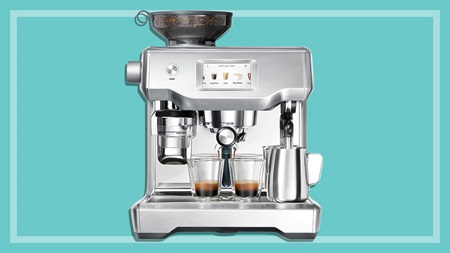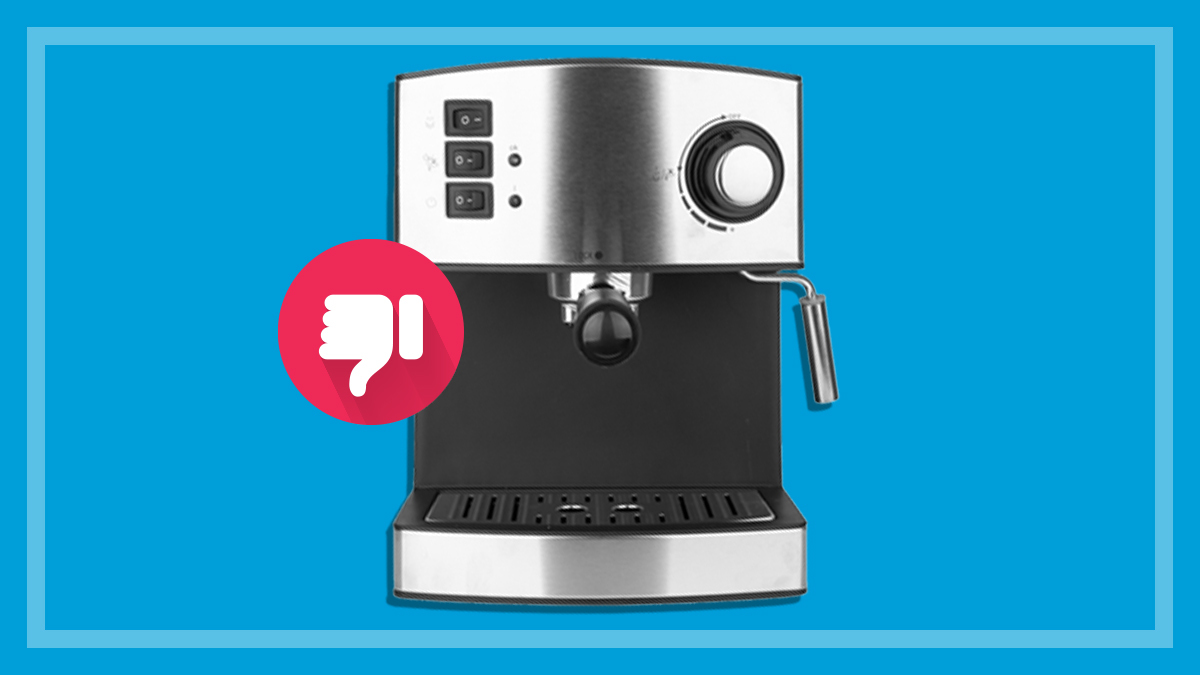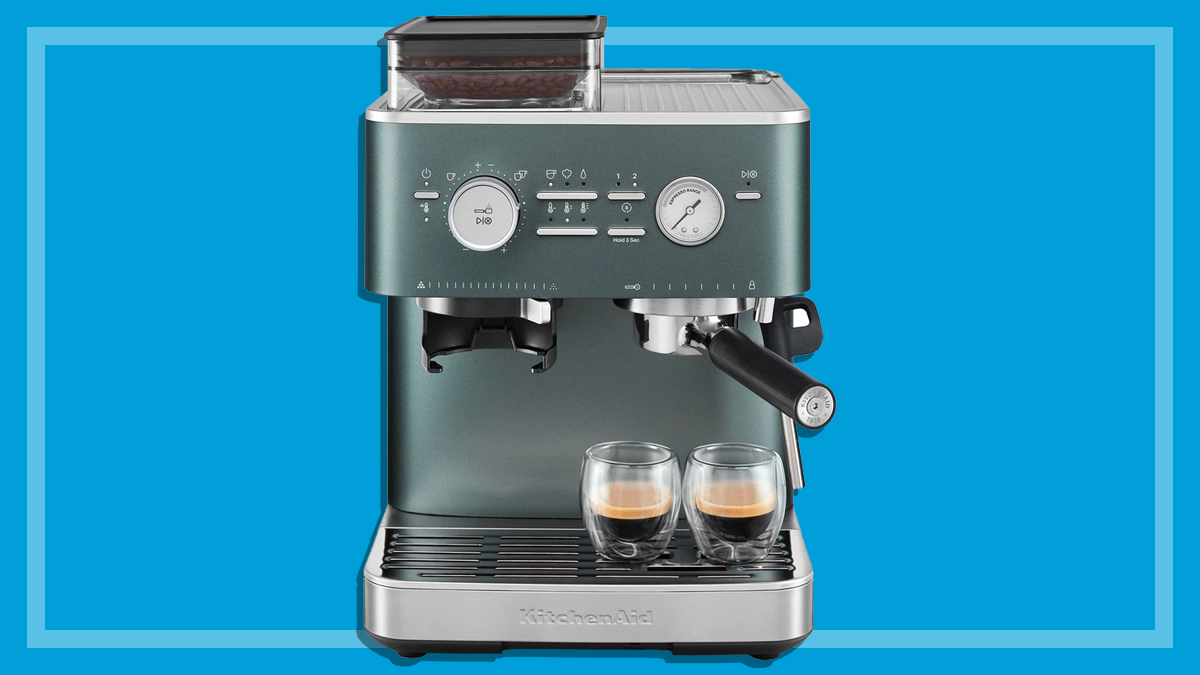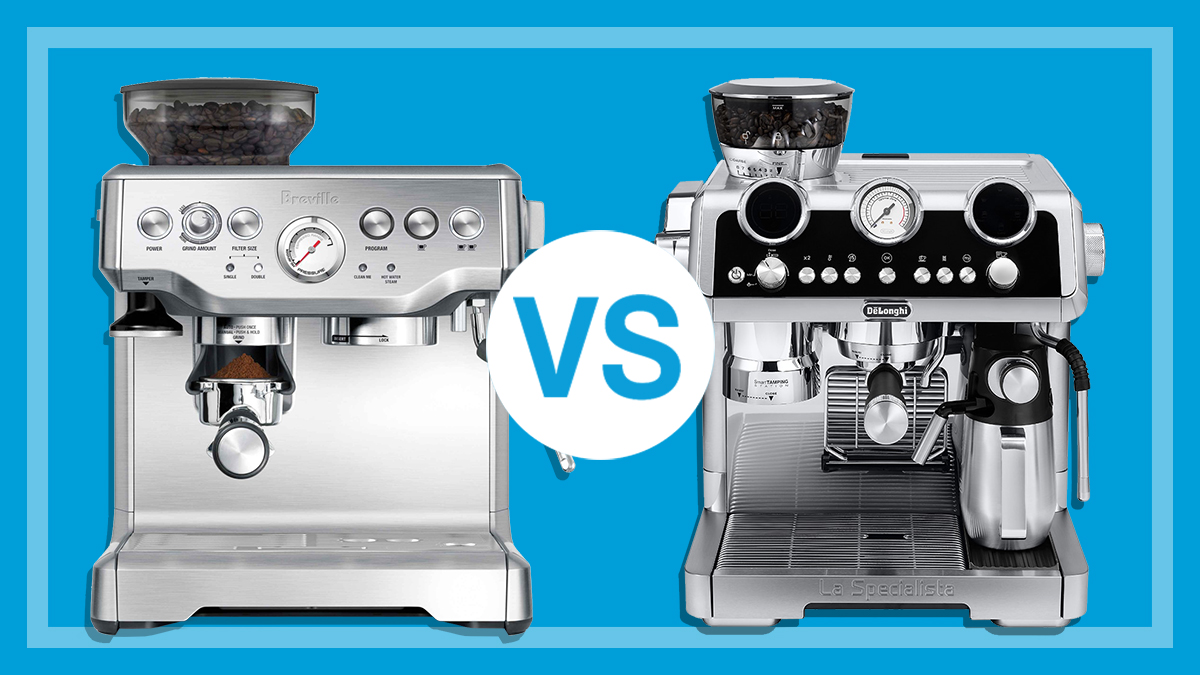Get our independent lab tests, expert reviews and honest advice.
7 ways to make your coffee machine last longer
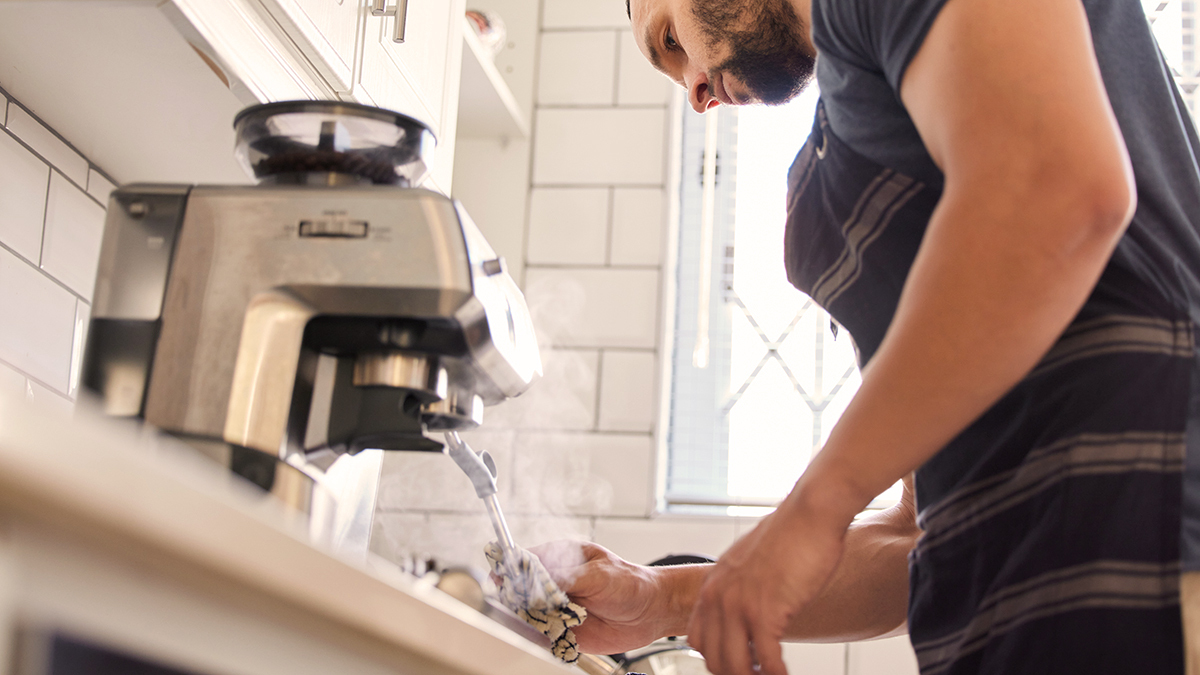
Your coffee machine may be one of the most complicated appliances in your kitchen. A well-maintained machine can last you for years, but if you cut corners you can soon experience problems that will have you running straight back into the arms of your barista.
With that in mind, we asked CHOICE expert Adrian Lini about the best ways to ensure your machine keeps that precious, precious coffee coming for as long as possible.
1. Clean it regularly
“I recommend that every time you use the machine, you should give it a quick clean,” Adrian says. “That includes wiping the steam wand, and rinsing the group head and drip tray.”
“If you find you’ve left it for too long, you may need to use warm soapy water.”
The steam wand, drip tray and group head are the areas you should focus on cleaning each time you use your machine:
- Milk, including non-dairy milk, leaves residue on the steam wand. It’s much easier to clean it when it’s fresh rather than leaving it. Don’t forget to purge the wand to expel any milk that’s inside – you don’t want old milk flavour in your next coffee!
- Each time you use your machine, the drip tray will fill with water and coffee grounds – it’s the perfect environment for mould to grow in. Instead of letting it fester, empty it and rinse with hot water each time.
- If you have a manual or semi-automatic espresso machine, you should use the blind filter (the one that doesn’t have holes in it) to flush hot water through the machine about once a week.
Read the instruction manual to make sure you’re following the manufacturer’s recommendations for your machine.
“If you leave a drip tray with coffee in it for a couple of days, it becomes a nightmare to clean, compared to cleaning it immediately after use,” says Adrian.
“It’s a great habit to get into and will save you loads of time in the long run. Mould absolutely loves coffee, so regular cleaning will save you having to deal with a mouldy machine.”
Here’s our step-by-step cleaning guide: How to clean your coffee machine.
2. Replace your water filter
Your coffee machine’s water filter helps to prevent scale build-up which can affect the performance of your machine over time, potentially causing blockages and heating problems.
Check the instruction manual to see how frequently to change the water filter (if your machine has one). And keep a close eye on it as you’re using it.
If you live in a hard water area, you’ll find that you need to change the water filter more frequently.
3. Descale your machine
Over time, mineral deposits build up on your machine’s boilers and internals. How often you need to descale depends on the hardness of the water in your area. If you don’t regularly descale the machine, it could clog up and stop working.
Some of the more expensive machines will have indicators that will tell you when your machine needs cleaning and descaling. Again, your best bet is to read through the manual and follow what the manufacturer says.
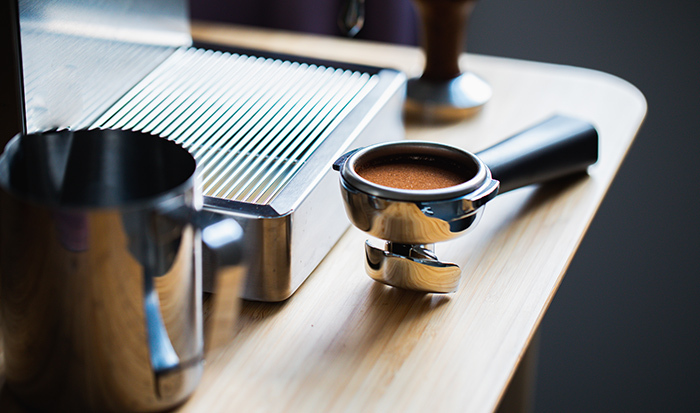
4. Give your grinder some TLC
Your coffee grinder is an important part of the coffee-making process: if you grind the beans incorrectly, no amount of latte art or perfectly-timed extraction will make the coffee taste any good. So keeping your grinder happy is key to enjoying delicious coffees.
One thing to keep in mind before you start fiddling with your grinder: they can be extremely sharp, so be very careful!
Soap and coffee grinders generally don’t mix. “Make sure you read the instructions for the specific grinder you have, but often you shouldn’t use soap (and sometimes even water) to clean the grinder to protect the mechanisms and oils within the grinder that help it move freely and in fine increments,” Adrian says.
“Sometimes it’s best just to use a brush or air to clean certain components.
“As long as you aren’t leaving the grinder or the machine filled with old coffee for weeks on end, and you’re giving it a quick clean each time you use it, you shouldn’t have any problems.”
5. Don’t ignore signs there may be something wrong
Addressing any issues as they arise is good practice in your relationship with your coffee machine. Don’t ignore the little niggles – if you take care of them quickly, they’ll stay little and will keep your machine happy and the quality coffee coming.
Each year CHOICE surveys thousands of Australians, asking them what issues they’ve had with appliances. The most common reported issues with coffee machines in the most recent survey were water leaks, broken seals, issues with the water pump, or the machine stopping all together.
If any of these issues occur with your machine, or there are any warning signs … do some troubleshooting quick smart
If any of these issues occur with your machine, or there are any warning signs – such as the coffee tasting bad (or noticeably different), the temperature not being hot enough, the pour being slower than usual or your machine making strange noises – do some troubleshooting quick smart. It may just be that the machine needs a thorough clean and descale to remove any blockages.
Consult your owner’s manual as it will likely have tips for troubleshooting or contact the manufacturer to organise a repair.
6. Turn it off
“If you make multiple coffees a day, then you can leave it on all day, but always turn it off at night,” says Adrian.
“If you only make coffee in the morning then turn it off after breakfast.”
If you’re not using your coffee machine, switch it off – leaving it on all the time ends up wearing down the machine and can make it too hot to use anyway.
Most espresso machines will turn off automatically, but it’s a good idea to get into the habit of switching it off when you’re finished making coffee for the day.
7. Buy a quality model
A high price tag doesn’t necessarily mean good performance – you can pick up some reasonably-priced machines that will deliver as good a coffee as models costing many times more.
But when you’re buying a new coffee machine, it pays to look for one made with quality components – and, better still, one that has replaceable parts should anything need repairing down the line.
Ideally, you’d want a machine that’s not too plastic-y. If the machine body, group head and portafilter are made from stainless steel, they’re likely to last longer. All the maintenance in the world won’t save a cheaply-made coffee machine!
Poorer quality machines tend to have a common problem: the portafilter and group head not fitting together well, meaning that the machine doesn’t build enough pressure to make a good espresso. It’s a good idea to look at a machine instore to get a feel for it before you buy.
Look for a coffee machine made with quality components – and, better still, one that has replaceable parts
So what kind of machine should you buy?
“Coffee is subjective so find a machine in your price range that can match what you want out of it,” says Adrian.
“A higher quality machine will have components that are similar to a commercial cafe espresso machine and therefore perform better, but not every user needs or wants that at home. A mid-range machine will make great espresso but have less fancy features and precision.”
And just remember that a good machine isn’t the be-all and end-all of coffee making.
“It can’t be stressed enough how important it is that you have a high quality, precise grinder and fresh beans when making espresso. It can make a cheap espresso machine perform way above its weight,” says Adrian.
When we surveyed more than 2700 CHOICE members about their coffee machines, the most reliable mainstream brands were Breville, Sunbeam and DeLonghi. Unfortunately, this data doesn’t capture information about high-end models made by smaller manufacturers, so do as much digging as you can about the particular model you’re considering before you buy.
If you’re careful about which coffee machine you purchase and attentive about maintaining it, you’ll be able to enjoy great coffee for years to come.

